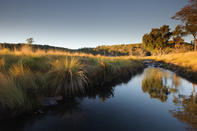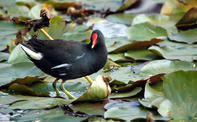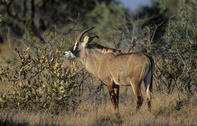Natural Wonders
Flanked by the Waterberg Biosphere and the Nylsvley Nature Reserve, Modimolle is a place filled with natural wonders. Both of these destinations are popular tourist attractions, while for the locals the importance of the Waterberg Biosphere moves beyond its biological diversity.

The biosphere is a water reservoir that supplies the arid region with its life-giving resource. This is a vital service, as the area is known for having low mountain ranges and slopes, which have poor soils.
The Waterberg Biosphere Reserve is a savanna biome in that it has mixed vegetation and its climate is marked by extended periods of dry and wet seasons. Within its locale lies plenty of red and orange listed plant species that have been classified as a conservation concern as well as indigenous flora. Due to the reserve’s low human population, large tracts of the land remains unspoiled.
Visitors to the biosphere can catch a glimpse of the area’s former inhabitants who left behind remarkable San rock art. The artistic remnants of the past spans thousands of years. The Waterberg Biosphere has produced a fine balance between developing mindful tourism that has a positive and direct influence on the communities, which make up the human population of Modimolle.
Nylsvley Nature Reserve
The Nylsvley Nature Reserve is a formidable South African wetland. Fed by the Nyl River that meanders through the plains of Modimolle, this wetland is the largest conserved floodplain in South Africa. A wide range of bird species populate and frequent the area. Almost 400 bird species have been recorded in the area, many of which are known to specifically breed at Nylsvley. The reserve also earned the title of Ramsar Wetland Site of International Importance due to the area’s waterfowl species, which are red-listed as a potentially endangered species.
The Nylsvley Nature Reserve is flushed with green tranquillity that is sure to cast peace over any weary soul. Arching across its blue skies are a variety of birds, sure to attract serious birdwatchers, while the verdure landscape contrasts to form a spectacular sight that is best captured by the heart. Another standout feature of the wetland is the wild rice that grows between its reeds and marshy plains. Undoubtedly, this development attracts a host of animals such as antelopes like the roan and the tsessebe.

